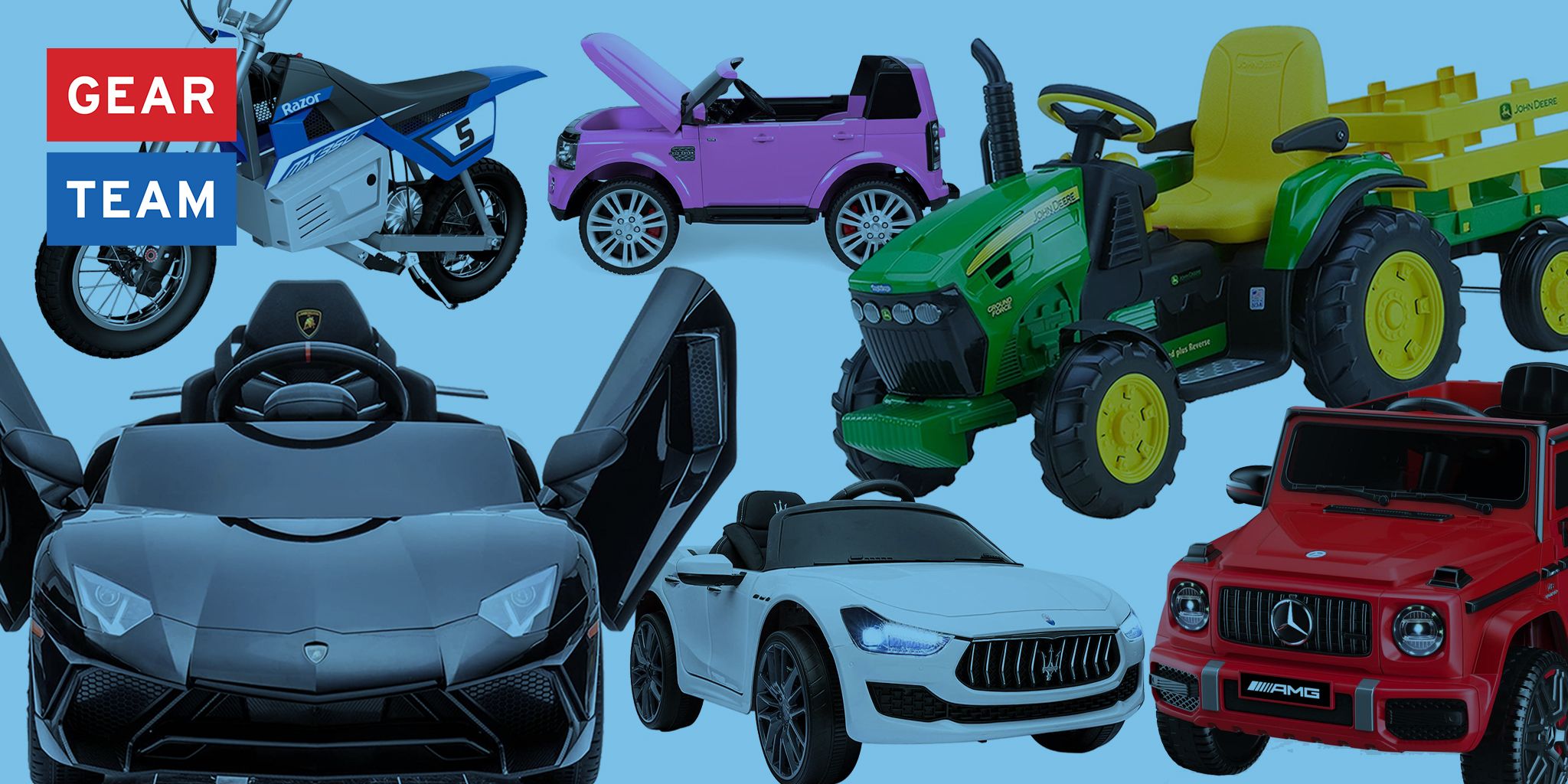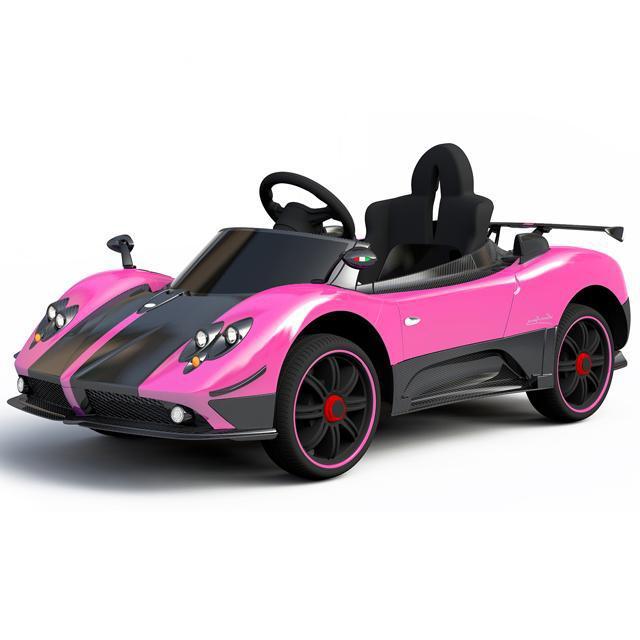Best Advice To Deciding On Kids Ride On Cars
Wiki Article
What Safety Features Of An On-Road Vehicle Should I Take Into Consideration? The Pros And Negatives
The safety features of the child's ride-on vehicle are crucial to their safety and enjoyment. Here are some important security features to take into consideration and their pros and cons Seat Belts -
Pros - Seatbelts keep your child inside the vehicle they ride on, which reduces the chances of them falling off or being kicked out during play. They also provide extra protection, particularly during sudden stops or turns.
Cons - Not all ride on cars come with seatbelts. This includes those that are designed specifically for children younger than. Also, some children find seat belts uncomfortable and restrictive. This may result in a resistance to using them.
Sturdy Construction -
Pros- A sturdy ride-on vehicle made of high-quality materials and durable components is more durable to damage. It provides long-term security. It is able to endure the rigors of playing, and provides stability when it is used.
Cons - Sturdy design usually is priced higher at the point, making it more costly for some families. Additionally, the more heavy materials may affect the mobility and maneuverability of the ride on car.
Low Center Of Gravity
Pros - Ride on cars that have low centers of gravity have a lower chance to topple over which decreases the likelihood of injuries or accidents. They offer greater stability and balance during maneuvers or turns.
Cons - Ride-ons with low center-of-gravity could sacrifice ground clearance in order to be off-road capable. This could make it difficult for the rider to be flexible.
Remote control for parents'
Pros: Remote-controlled vehicles give parents the capability to monitor and supervise their children's activities, giving an extra layer of control and security. Parents can prevent collisions, assist in an emergency, or navigate difficult terrain.
Cons – Parental remote control can hinder children's autonomy and independence, as they rely heavily on supervision and guidance from parents while playing. In addition, models which can be operated remotely could cost more than models that have manual controls.
Speed Limiters
Pros - Ride-on vehicles that have speed limiters or adjustable speeds permit parents to limit the maximum speed, and decrease the possibility of accidents and collisions. They can gradually increase speed as the child grows in confidence and skills.
Cons - Some kids might get used to the slower speeds very quickly, leading to frustration and discontent. Speed limiters are not always available on every model or they might require additional features or accessories.
Safe Start Technology -
Pros - Safe Start technology ensures that the ride-on car can stop and start without a hitch, eliminating the danger of sudden lurches or jerks that can frighten or even destabilize the child. This ensures a safer and more comfortable ride.
Cons - Ride-on cars with safe start technology might cost more than basic models without this feature. Furthermore, children might feel that the gradual acceleration and deceleration less exciting or engaging as opposed to immediate stops and starts.
Visibility Enhancements
Pros - Ride-on cars fitted with visible enhancements, such as working headlights, reflective material, or taillights increase visibility. This is particularly true in dimly lit environments or in a variety of conditions. They enhance safety by making the vehicle more noticeable to motorists or pedestrians.
Cons - The increased visibility could lead to the battery draining more quickly, or increase the level of complexity. This can increase the chance of issues or maintenance.
Consider these security features, weigh their pros and cons and select a car that will prioritize your child's security while still giving them a great and enjoyable play experience. Take a look at the top rated electric kids cars for blog recommendations including childrens electric ride on, kids electric cars, ride on car, lambo toy car, electric ride along car, car on ride, childs car toy, two seater childrens electric cars, cars pedal car, childrens electric ride on and more. .

What Are The Best Models For Kids Cars? Designed For Indoor And Outdoor Use?
In the indoors or outdoors, kids car models are made to work in various conditions and settings. These models are designed differently for indoor use. Use Cars
Size and weight cars intended for indoor use tend be lighter and smaller, allowing them to be more comfortable in tight areas such as hallways, living rooms or playrooms. They are compact enough to maneuver around tight corners and narrow passages without causing damage to walls or furniture.
Low Ground clearance - Indoor vehicles are built with a the lowest ground clearance to avoid getting stuck on carpets, rugs or thresholds. This permits smooth, continuous moving across indoor surfaces.
Smooth Wheels. The wheels that are used in indoor use cars can be made out of materials such as rubber or plastic to provide the traction. They are made to block out noise and avoid scratching indoor surfaces.
Temporary Speed - For indoor usage, cars typically are slower than usual to ensure that they are safely operated and controlled in tight spaces. This can help avoid collisions with furniture, walls or any other indoor obstructions.
Outdoor Use Cars -
Durable Construction- Cars that are built for outdoor use are constructed with sturdy materials. They may be made of strong metal or plastic to withstand elements of the outdoors like the sun, humidity, temperature changes and rough handling. They are less likely to suffer from tear and wear caused by exposure to outdoor conditions.
For outdoor use, cars that have a higher clearance of the ground can overcome obstacles and bumps in the outdoors. This allows them to traverse rough surfaces like pavement, gravel dirt, grass, or even dirt without getting stuck or harmed.
Traction tires - Tires for outdoor vehicles are usually equipped with treads and patterns that provide better grip and traction on rough or uneven surfaces. This allows for better control and stability while driving on terrains that are outdoor.
Weather Resistant - For outdoor use, vehicles can include components that are resistant to moisture or environmental damage including waterproof casings, sealed electronics and even waterproofed ones. They can withstand the elements of rain, mud, or puddles without compromising the performance.
Outdoor cars are typically quicker to take advantage of the wide spaces of open space, as well as the long distances that are encountered in the outdoors. It is an exciting adventure for kids who are exploring outdoor environments.
Parents can pick a car for their children that suits their requirements, whether indoors or out, by considering the style and features. This will ensure the safety, enjoyment and long-lasting play experience. Have a look at the most popular click here about Audi ride on car for website info including childrens electric cars, two seater electric cars, toy the car, car electric ride on, car toy car toy, ride electric car, remote control childrens car, ride of car, ride ons, ride of car and more. .

What Is The Best Remote Control Car To Use With Children? What Are Their Pros And Cons?
The different sizes, styles price, styles, and models of remote-controlled cars for children are available to meet the budget and requirements of everyone. Below is a list of different kinds of remote-controlled kids' cars, including their sizes, price ranges, and pros and con.
Electric RC Cars – These are battery-powered, remote-controlled vehicles which can be used indoors and out. These cars come in a variety of styles including trucks, buggies or sports cars.
Nitro RC Cars – Gas powered remote controlled vehicles that offer greater performance but need greater maintenance. These cars are usually bigger and more expensive than electric RC vehicles.
Scale Models - Remotely controlled replicas of real-life vehicle models, which include cars, trucks boats, and airplanes. The sizes of scale models range from 1-10 to 1--24. Larger models have more details and greater real-world realism.
Sizes -
The sizes of remote-controlled vehicles for children vary from tiny micro-sized versions to larger-scale replicas. The size of the vehicle could affect the performance, speed and the handling capabilities.
Micro-sized vehicles are small and lightweight, making them ideal for indoor use and play by younger children. The larger models offer greater power and durability, making them suitable for off-roading and racing.
Prices -
Prices for remote-controlled kids' cars will vary based on the characteristics, features, and brands as well as the quality.
The RC cars that are small-sized and electric range from $20 to $100, while larger-scale electric and nitro RC vehicles can cost between $100 and $500 or more.
Scale models, high-end hobby RCs may cost from a few hundred dollars to over a $1,000 depending on the quality of the model and performance.
Pros and Pros and
Pros -
Entertainment - Children's remote controlled cars can provide hours of fun and entertainment for both adults and children.
Skills development Learning to drive an RC vehicle helps children to develop their spatial awareness and hand-eye co-ordination.
Social Interaction - RC cars can be enjoyed with family and friends, and encourage social interaction and cooperation.
Customization – Many RC cars are customizable with aftermarket modifications components and accessories that boost performance and look.
Cons
Costs - A premium model with advanced features can cost a lot, particularly for hobby grade models.
Children may find it difficult to control the RC cars initially.
Maintenance - RC vehicles require regular maintenance. This includes cleaning, lubrication, as well as occasional repairs and replacement of parts.
Safety concerns - RC car safety can be impacted through electrical hazards, collisions, and other dangers if the cars are not used with caution and supervision by an adult.
In general, remote-controlled children's cars offer a thrilling and educational experience for children of all ages. However, it is important to take into consideration factors such as size, price features, safety, and size when selecting the best model for your child. For older children, hobby-grade RC cars may be a better choice. However, simpler models can also be an ideal choice for kids who are young. Follow the recommended kids ride on cars kidscars.co.uk info for more advice including two seater electric cars, ride electric car, electric car ride, remote control childrens electric cars, toy ride, toy in car, digger ride, 2 seater electric cars, car for toy, childrens digger and more. .
